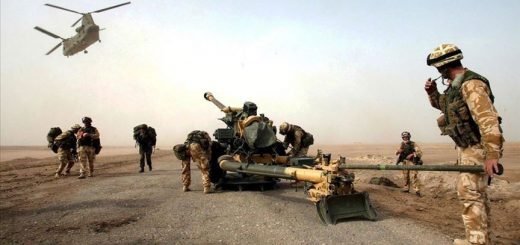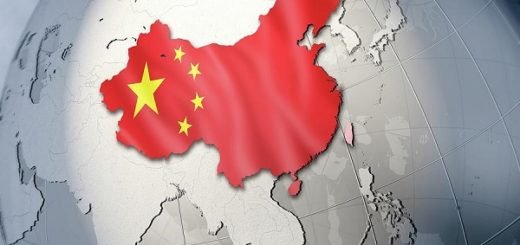Defence Ties between India and the Latin America- Caribbean Region: A study in farce
India’s approach to arms sales has been hampered by an absurd notion that arms sales to one country would hurt its relationship with another. One only has to look at France, which sold Mirage fighters to Brazil, Argentina, Venezuela, Ecuador, Colombia, Peru and Chile with no deleterious effects on its relationship with any country, despite intense regional rivalries, to show that India’s approach is clearly misguided.- Sanjay Badri-Maharaj*
While India has made some considerable progress in its economic relationship with the Latin America-Caribbean (LAC) region, its defense ties with the region remain poor, hamstrung by bizarre ideas, poor marketing, and diplomatic support. Indeed, one may legitimately say that India has almost completely neglected this region in its quest to export arms, failing to make use of the resources at its disposal to carve out a niche for itself in this potential market.
Training and Non-Lethal Hardware
The LAC region includes tiny islands of the Caribbean, many English-speaking, the Guianas – Guyana, Suriname and French Guyana – and the small nations of Central America, south of Mexico. In all of these countries, India has much to offer in respect of training, equipment (lethal and non-lethal) and overall security cooperation. Indeed, as the potential for pirate attacks increases in the region and the specter of terrorism looms large, Indian expertise in these spheres could be of considerable interest to the region.
Furthermore, the United Nations (UN) peacekeeping operations provide the opportunity for enhanced cooperation as Brazil, Uruguay, Argentina and Colombia have contributed extensively to the UN peacekeeping forces worldwide. The armed forces of smaller Caribbean countries such as Trinidad & Tobago and Jamaica served with distinction during peacekeeping operations in Haiti. In the quasi-related spheres of disaster management and humanitarian assistance, Latin American and Caribbean forces routinely undertake such activities and could again benefit significantly from the Indian experience in this regard with the exchange of personnel and exercises.
READ: India Must Prioritize its Relationship with Latin America and the Caribbean
To date, however, while there have been some officer exchange programs and training opportunities offered to LAC countries, these have been relatively limited, somewhat haphazard and have not been done with sufficient regularity or geographic breadth to adequately encompass the entire region. This is somewhat puzzling as the militaries of the LAC region have a long tradition of availing themselves of overseas courses. India’s approach stands in stark contrast to China’s which has aggressively offered training courses to LAC military forces.
Arms Sales – Erratic Efforts
India’s arms sales, to the LAC region, have been limited and represent a combination of commercial sales through private sector companies and sales from the Indian defense public sector undertakings (DPSUs). It does not seem, however, that these sales were part of a cohesive arms export drive in the region. In the absence of required diplomatic, banking and possible support from the Indian financial institutions, the scope for expanding sales is not as promising as it might otherwise be. Furthermore, India’s approach to arms sales has been hampered by an absurd notion that arms sales to one country would hurt its relationship with another. One only has to look at France, which sold Mirage fighters to Brazil, Argentina, Venezuela, Ecuador, Colombia, Peru and Chile with no deleterious effects on its relationship with any country, despite intense regional rivalries, to show that India’s approach is clearly misguided.
Among the prominent sales of Indian defence products in the region have been:
- The sale of two Mahindra Rakshak armoured vehicles and one Mahindra Rapid Intervention Vehicle to Guyana Police Force.
- 139 Ashok Leyland 4×4 trucks to the Honduran Army.
- Mahindra 4×4 vehicles to Argentina, Uruguay and Belize.
- 29 Mahindra Marksman vehicle to the Chilean Carabineros Special Forces
- Two civil model Dhruv helicopters to Peru.
- Seven Dhruv helicopters to Ecuador (now withdrawn from use following accidents), and
- Three Chetak helicopters to Suriname
These sales are modest, but not insignificant. However, two sales have been plagued by some degree of controversy, occasioned in part by poor post-sales support and poor contract coordination with the purchaser. The sale of Dhruv helicopters to Ecuador was widely hailed, and rightly so, as a major breakthrough for Indian arms export. However, after a number of crashes (several of which were caused by pilot error), the helicopters were withdrawn from use, citing, among other things, poor spares support from Hindustan Aeronautics Limited (HAL).

Armoured vehicle Mahindra Rakshak | Image: Mahindra
The sale of Chetaks to Suriname was plagued by poor contract management and “financial and administrative obstacles”, which led to the helicopters being ready long before pilots were ready to be trained, leading to a delay in delivery of the helicopters. In addition, an apparent disconnect between the user and the supplier in negotiating the contract led to Suriname acquiring Chetaks rather than the Dhruvs that they reputedly preferred. It should be noted that on this latter point, HAL always seemed clear that it was selling Chetaks to Suriname rather than Dhruvs, but the issue remains a point of minor contention between the parties. Even the sale of the Mahindra Marksman to Chile has had its share of controversy as a litany of complaints about poor visibility, security flaws and off-road performance have been levelled at it, and it is not known if Mahindra & Mahindra is working on any remedial steps to overcome the criticism.
In none of the above cases has the Indian Government been the prime mover, providing support, reassurance and a method of informal dispute resolution to prevent minor issues becoming major ones. This was despite the fact that Suriname used US$ 13m from a US$ 16m Indian line of credit to make the purchase. Little interest was thereafter shown in making the procurement flow smoothly with “financial and administrative problems”, as stated earlier, playing a part in delaying the delivery of the helicopters. In fact, it was the proactive approach of the Indian ambassador to Suriname that enabled the delivery of the Chetaks and its acceptance by the Suriname Government.
Had a similarly proactive approach been followed in Ecuador and Chile, the issues and concerns raised by the customers could have been dealt with without acrimony. This confused and somewhat half-hearted approach to defence sales to the Latin America-Caribbean region is hindering Indian efforts to raise its global profile. It is also noteworthy that the US though uncomfortable with China’s profile in the region has not objected to it strenuously. It is therefore unlikely to be hostile to a greater Indian presence in the region.
A Way Forward
India-LAC military ties can only progress and achieve their potential if there is synergy between India’s political and diplomatic establishments and the military/ military industrial leadership. To date, this has been sorely lacking. As a first step, for example, India could increase the number of training slots on courses offered to staff officers from the region’s armed forces. This could be done alongside an increase in the regional allocation for military engineering and cybersecurity courses that are currently on offer.
If India is seeking to enhance defence sales to the LAC region, however, it faces an uphill challenge. This is partly because of the relatively well developed defence-industrial base in many of the larger LAC countries, but also because India has not established itself as a provider of such hardware on any meaningful scale. To overcome this, India could gainfully make gifts of its decommissioned military hardware. In doing so, India would be following in the footsteps of South Korea, Israel, the United States and the Netherlands which, through a combination of outright gifts, discounted sales and military assistance packages, have come to dominate the Latin American market.
India has made some tentative steps in this direction with gifts of OPVs to Sri Lanka, helicopters to Nepal, Maldives, Bhutan, and Mauritius, and, in more recent times, T-55 tanks and Mi-25 gunships to Afghanistan. However, it is suggested that India should follow the South Korean example and sell or donate surplus military hardware with the intended aim of increasing its influence in those regions as well as laying the foundation for Indian arms exports in the future. If the aim is to increase influence, India may, like South Korea, have to make gifts of hardware or offer items at very low prices in order to achieve its objectives. In addition, India must be prepared to refurbish and overhaul items before transfer.
The obvious question would be: what can India offer? Indian T-55s could be a welcome addition to tank forces in Uruguay, Peru and Ecuador where the T-55 is already in service. Indian Vikram class OPVs could serve as useful assets for countries such as Costa Rica, Uruguay and even Panama or the Dominican Republic where they would join vessels of even older vintage.

T 55A at Panzer museum | Image: Wikimedia
The other item that India can consider transferring is combat aircraft. Over the last decade, India has decommissioned significant numbers of MiG-21(-FL, M/MF and -bis variants) and MiG-23 (-MF and -BN variants). These types have served with distinction in Cuba and may prove to be attractive to Central and South American air forces unable to acquire new combat aircraft. What is more, India has, over the decades, acquired sufficient expertise at the repair and overhaul of this equipment and possesses a stock of spares that would make the transfer of such military equipment a viable and sustainable option for the recipient countries.
These “gifts” or discounted military items in and of themselves do not constitute “sales” but they pave the way towards establishing a presence and developing a practical working relationship with the military establishments of the LAC region. Moreover, if combined with adequate diplomatic support, these “gifts” could open the door to greater opportunities for Indian defence products, either through sales or through joint-ventures, to penetrate the LAC defence and security markets. While India’s efforts to date have been little short of pathetic, there is no reason why a new start cannot be made. There is little risk to India in this approach and potentially much to gain.

*Dr. Sanjay Badri-Maharaj was a Visiting Fellow at IDSA. He is an independent defense analyst and attorney-at-law based in Trinidad and Tobago. He holds a Ph.D. on India’s nuclear weapons programme and an MA from the Department of War Studies, Kings College London. He has served as a consultant to the Trinidad and Tobago Ministry of National Security
The views and opinions expressed in this article are those of the authors and do not necessarily reflect the views of The Kootneeti Team.


















